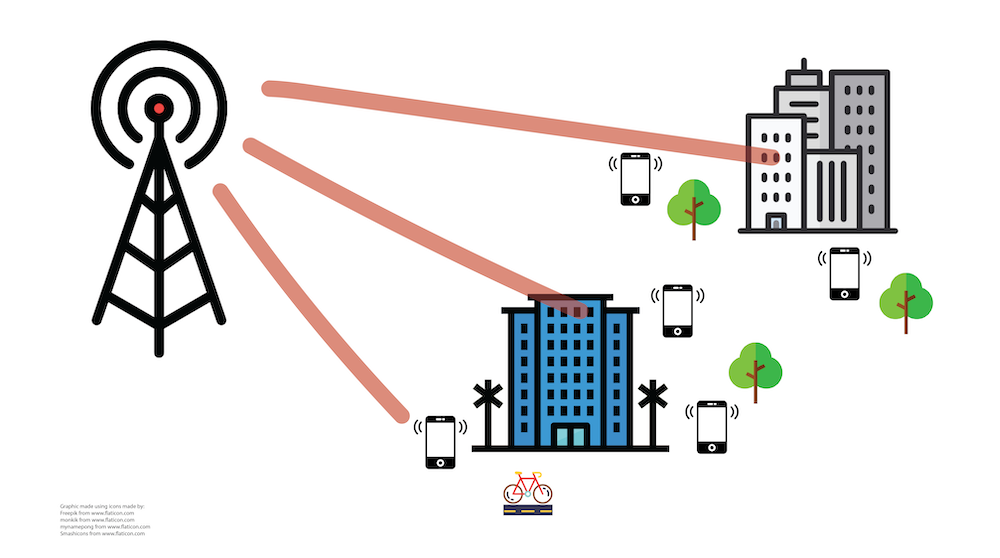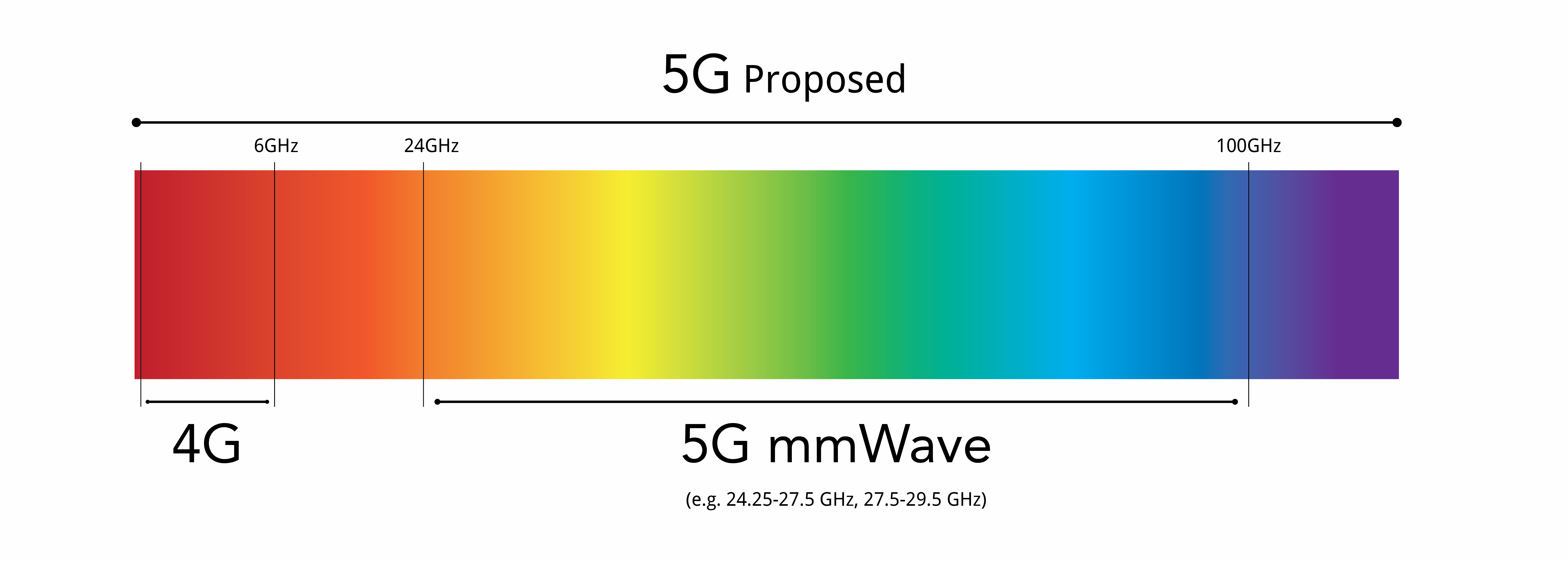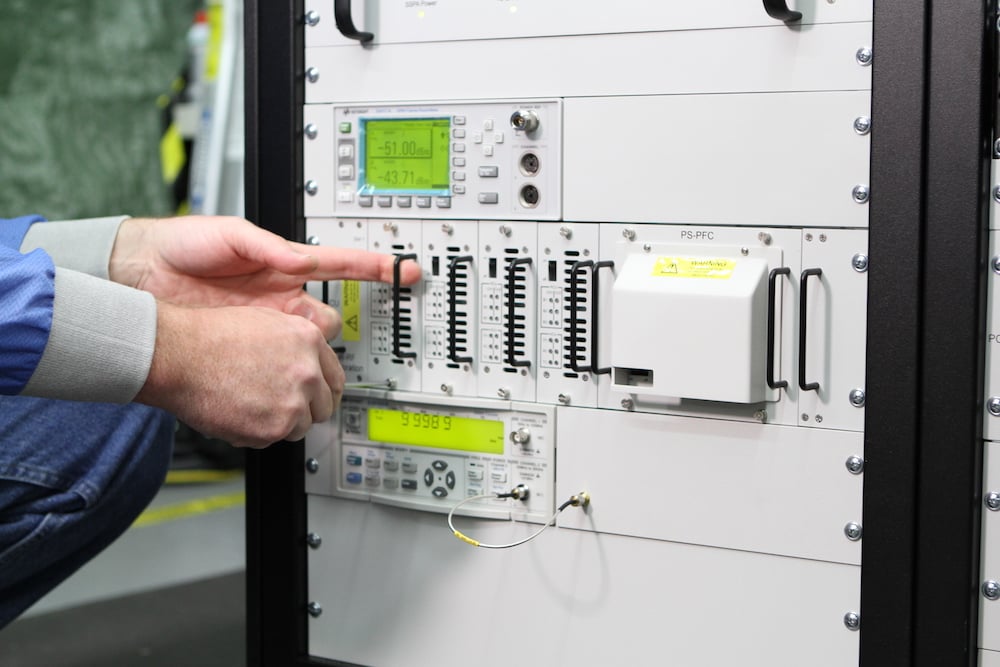The approaching footsteps of 5G new radio (NR) are no longer in the distance. Deployment of the technology is beginning now. For 5G to work, the passive antennas of LTE will give way to a new breed of phased array antennas that make the backbone of the new wireless network, beamforming, possible.
Creating this armada of electronically steerable antenna arrays is no simple task. It requires the latest (and often not thoroughly tested) chipsets on the market. As the full onslaught of 5G sweeps over the globe, the brunt of the testing burden will fall to chip manufacturers that must provide reliability data to sell their products into the emerging market.
By designing flexible testing systems that are fully scalable, Accel-RF is ready to help these producers meet the unique challenges presented by 5G beamforming.
How Beamforming Works
The idea of phased array, or active array, antenna technology has been around for decades. The military applied this concept into practice during the 1970s to improve radio-frequency system reliability through segmenting critically needed subsystem components into decentralized arrays rather than traditional single-point failure paths. This “graceful degradation” architecture moved transmit and receive amplifiers into an array of individual and independent branches in the system structure. By doing this, the system performance could be maintained even when >10% of the individual transmitters and receivers failed.
In addition to spreading the critical but often less reliable active transmitter/receiver modules into an array of many units, the system architecture could also make use of segmented paths of individual signal “phase-shifter” elements which could be used to form a resulting beam shape and direction, essentially an electronic steering process, for the antenna. This allowed another single point failure path, the antenna mechanical steering gimbal, to be removed from the system failure regime. The benefit of placing the beamforming or antenna pointing mechanism into an electronic array from a mechanical joint was a large leap in system reliability. The resulting phased-array active antenna was useful in many military missions; it was a more reliable, highly stealth capable platform that could gracefully degrade with age.
Beamforming as described above can be simply stated as the precise steering of tightly controlled radio signals through electronic rather than mechanical means. Beamforming is a necessity for the 5G NR wireless network.
For beamforming to work on the scale required for 5G, the electronic modules will need to operate at frequencies with wavelengths measured in millimeters (mmWave). Millimeter-wave active antenna array electronics must control the need for rapid signal direction changing, which is only achievable through electronic antenna steering.
Whereas LTE worked by discerning and selecting an appropriate cell station, 5G will work by discerning and selecting an appropriate signal beam. In the LTE architecture, the cell stations were centralized sites of large base station amplifiers and antenna towers for directional signal routing. In the mmW 5G architecture a base station is a decentralized local radio hub. The network will be made up of many more base stations covering much smaller areas or equivalently a very small microcell area. The need for numerous close-proximity base station equivalents will drive drastic changes in the system architecture and implementation. Each local base station will require circuitry and software intelligence to rapidly eliminate interference due to cross-over noise and to mitigate signal loss due to changes in the environment and user location. The base station will achieve this dynamic capability by phase and amplitude adjustment of the signal in the transmit/receive path and thus control the beam pattern precisely to maintain the user communication link. By steering the signal directly to the receiving device, the process ensures that the 5G network will function at a level commensurate with user needs and expectations.
Beamforming as applied to light or other electromagnetic waves such as radio waves is well established and has been used for many years. There are examples of it at work in the world around us, albeit not usually noticed in our day to day lives. This will drastically change as the mmW 5G infrastructure is deployed into our normal lives. Presented here are some special considerations for testing that 5G beamforming will impose on device manufacturers as system integrators require a high volume of tested and performance ready-to-go devices to roll out the new network.
Consideration #1: Testing Wide Bandwidth Ranges and at High Frequencies
5G technology represents an ambitious proposal for using a much more significant portion of the electromagnetic spectrum, especially at higher frequencies. With LTE, the highest frequency tested was 6 GHz. 5G operates in the 20 to 40 GHz range. That represents a much broader bandwidth and much higher, previously unused (and therefore typically untested) frequencies.

The larger bandwidths mean tests must cover a more extensive range of frequencies in which a device may operate, which tends to require more sophisticated testing equipment.
Higher frequencies create their own set of obstacles. Again, the complexity, and therefore the cost, of test equipment goes up dramatically once past the 6 GHz limit. Since there is not much data on device characterization at frequencies in the Ka-band area, chip manufacturers will need to invest and perform the required testing to ensure device and system reliability figures of merit are achieved.
Consideration #2: Power Availability
Chip manufacturers will soon discover that they will have to test for a wide variety of power levels on 5G beamforming components. Since the density of these devices will be so high, network designers will place transmitters in some areas that have power readily available and in some that rely only on solar or wind. Chip producers will have to have the capability to test for every type of power supply situation imaginable.
Device manufacturers will have to provide performance data that demonstrates how their devices perform when power sources are inconsistent. Network providers must ensure the network performance won't suffer because a single device quits working when its power supply isn't ideal.
Consideration #3: Greater Path Loss
Testing at high frequencies is oftentimes problematic due to excessive path loss. At millimeter-wave frequencies, the distance travelled by the RF signal incurs very drastic insertion loss, whether traveling through air or along a transmission line. This phenomenon impacts both the system link margin and the device functional testing. Test fixtures cannot use long leads to connect to the component under test. In addition fixtures and device packages designed for sub-6 GHz operation cannot perform at mmW frequencies since they usually do not feature short connection paths, or mode-free package leads. Testing devices and multifunction integrated circuits at 5G frequencies will demand new packaging, fixturing, and testing subsystems required by the need for minimizing RF signal loss and maintaining RF signal integrity due to distances traveled.
Consideration #4: Small Tolerance for Error
At millimeter-wave frequencies, mechanical distances and joints become critical path concerns for signal loss and unwanted parasitic effects. To mitigate the inconsistency of mechanical machining and fabrication processes most dimensional tolerances are going to become very scrutinized in production. RF component placement in relation to the antenna, which will determine electrical phase length in the path of the RF signal, will be of critical concern for the beamforming realization. Manufacturing within these size constraints will drive device packaging, alignment, and environmental effects to be developed and production regimented. These characteristics will, in turn, drive overall reliability and performance assurance with age. Future changes and modification in any of these parameters will need to be assessed for reliability and age performance degradation concerns. For this market, device manufacturers will be required to quickly assess both performance and reliability figures-of-merit (FOM) when evolving manufacturing processes and technology.
Accel-RF Systems To Simplify a Reliable 5G Network
The ambitious scale, revolutionary semiconductor device technology, and innovative component designs of the 5G network will soon forever change the way people exchange and use wireless data. To ensure it is a success, device manufacturers will need a flexible, cost-effective, and reliable means to test large volumes of new devices used in never-before-seen ways.
The semiconductor device technology developments that 5G beamforming requires bring a new standard in the areas of testing. 5G device testing brings a difficult challenge at extremely high frequencies with large bandwidths under diverse power supply delivery, accommodating for power losses over connection paths all while handling almost no tolerance for error.

Accel-RF’s accelerated performance characterization testing systems are ideally suited to meet the challenges of the evolving 5G network. Since the systems are fully modular and easily configurable, manufacturers can scale their testing environments as needed. The base system that provides temperature control and DC bias is field proven and performance verified for 5G semiconductor technology. As the 5G RF standards continue to develop and change, the user only has to update the modular RF subsystem of the Accel-RF equipment. This modular approach permits the manufacturer to keep up with newer requirements of the 5G evolution.
With the approaching revolution of the millimeter wave 5G NR, the complexities of a new era in personal communications will be ever expanding and changing. However, with the heritage of Accel-RF’s device characterization test platforms, testing will be simplified and flexible.



